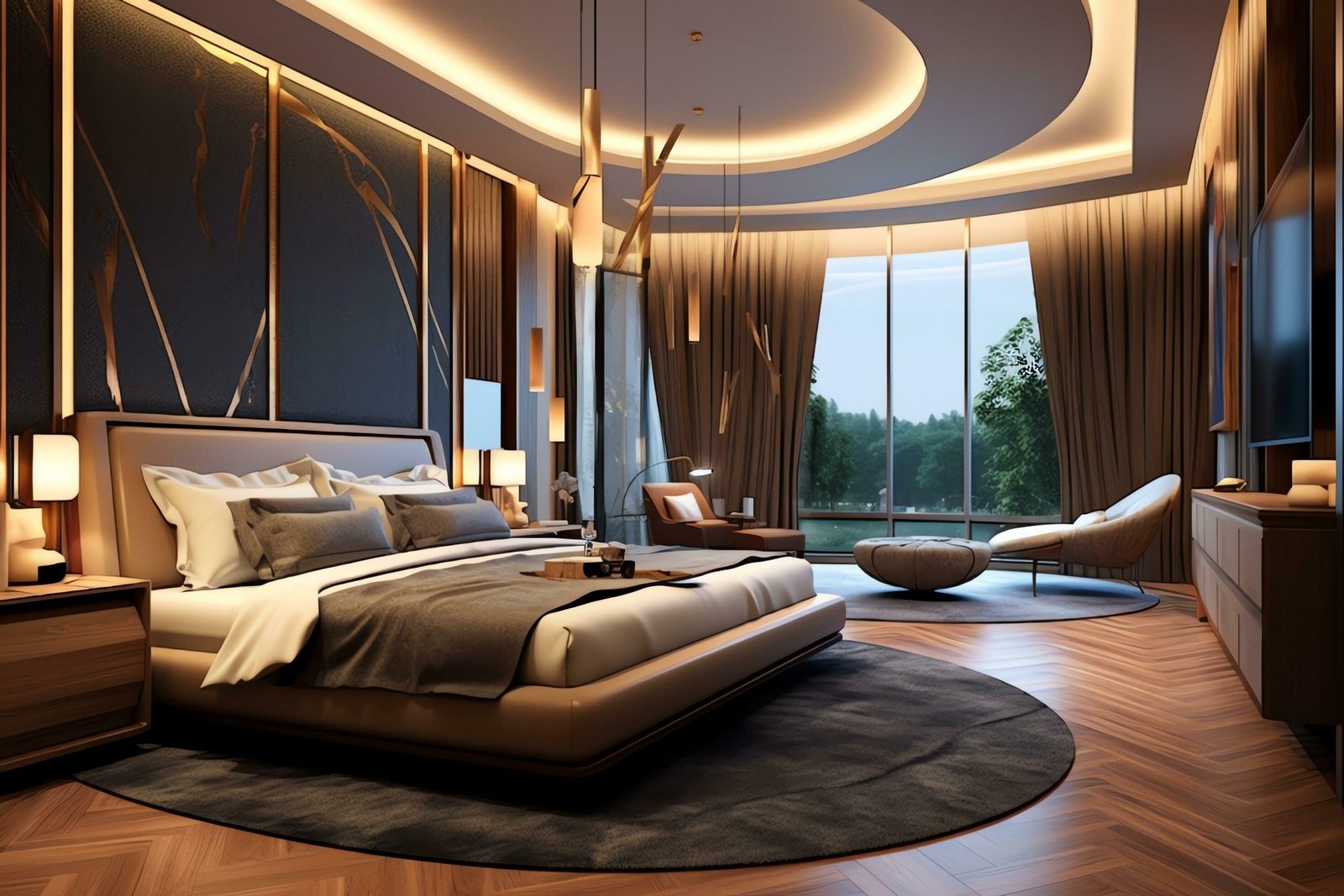
Contemporary design refers to the current and popular designs of the moment. Hallmarks of this design style include clean, curved lines, natural materials, stark contrasts, cool tones, and attention to quality. An ethos of intentionality is the focus of this aesthetic point of view. Contemporary design is the preferred design style for trendsetters who have the budget to continuously update their home décor to match the latest design trends.
4 Elements of Contemporary Style
Interior designers who create contemporary home spaces find influence in a few key principles, including:
- 1. Craftsmanship: Attention to craftsmanship is a hallmark of contemporary design. This home design style emphasizes intentionality, which extends to an appreciation for quality materials and artisanry. Some ubiquitous elements of the style include curated furniture pieces and clear surfaces.
- 2. Open floor plans: Contemporary design favors open spaces, which highlight simplicity, lines, and lighting. For example, you might opt for an open dining room and kitchen instead of a formal, enclosed dining room.
- 3. Simplicity: The contemporary aesthetic avoids bold prints and favors timeless simplicity, clean and round lines, and attention to detail.
- 4. Space: This minimalist approach to home décor highlights architectural elements of the contemporary home rather than the items in it.
4 Ways to Decorate in Contemporary Style
Here are some design ideas to create a contemporary bedroom, living room, or other living space:
- 1. Declutter the space. Contemporary style borders on minimalism, focusing on clean lines and high-end, contemporary furniture pieces in a space that is free of clutter. Clutter can make a space feel smaller, which is the antithesis of one of the key elements of contemporary design: cultivating a sense of openness. Take inventory of the space to look for opportunities to consolidate or donate pieces that don’t fit the style you’re aiming to achieve. Declutter your home with our step-by-step guide.
- 2. Incorporate natural materials. Create texture by incorporating natural elements, like wood, stone, jute, and metals, throughout your furniture, hardwood floors, or exposed walls. For example, a contemporary living room or bedroom might feature an exposed brick wall or create warmth with a jute rug. Upholstery choices may favor linen or leather.
- 3. Make deliberate lighting choices. Contemporary designers are deliberate about their lighting choices, which often means maximizing big windows for natural light or purposeful selections of light fixtures, like track lighting and lamps that are unpretentious yet high quality. For example, incorporating a stainless-steel pendant light or chandelier into a space instead of a traditional floor lamp. Contemporary window treatments usually convey a sense of classic elegance through clean lines and neutral colors.
- 4. Use accent colors. Generally, contemporary interiors favor a primarily neutral color palette of whites, creams, grays, or taupes with pops of bold or pastel color in accent pieces, such as wall art, lamps, or throw pillows. This design approach makes it possible to update a living room or bedroom to keep pace with evolving styles, like a statement area rug or a piece of bold artwork.




